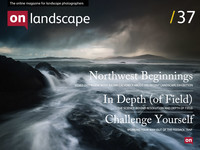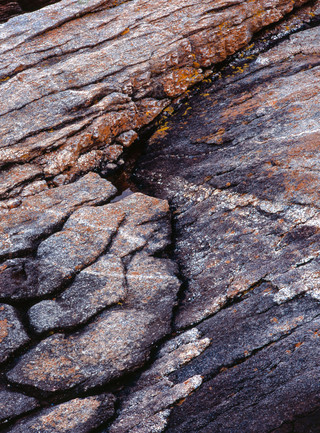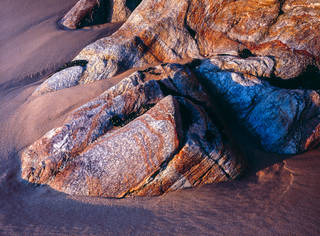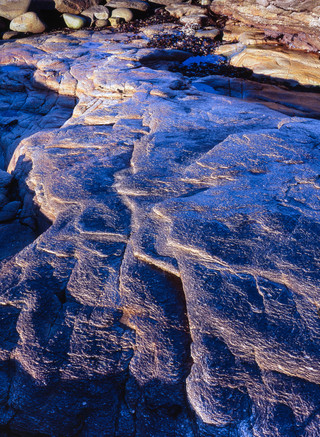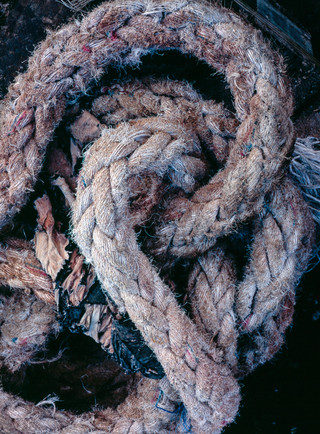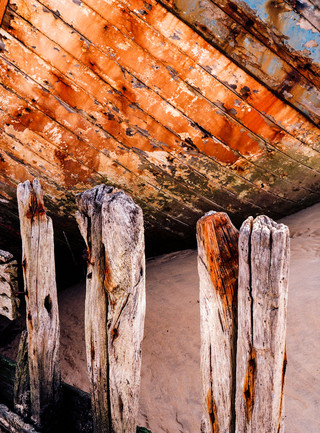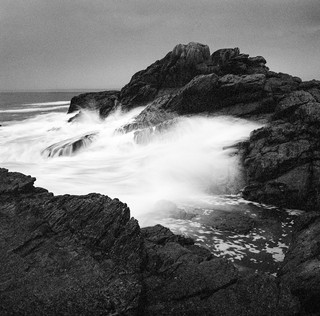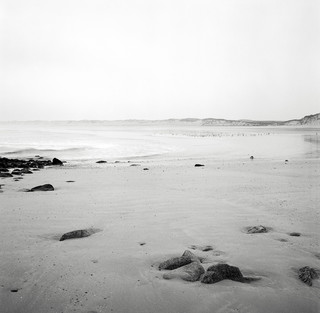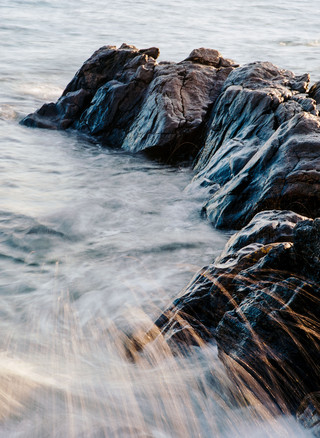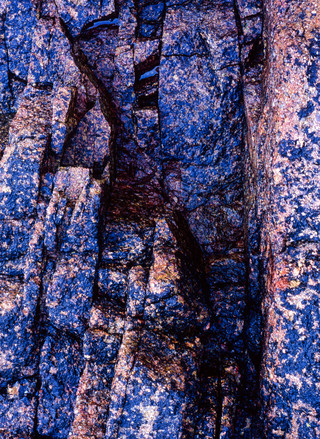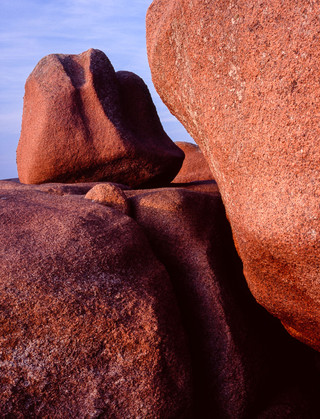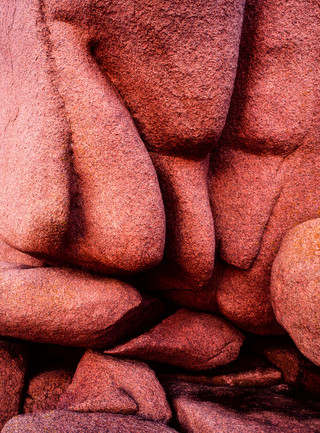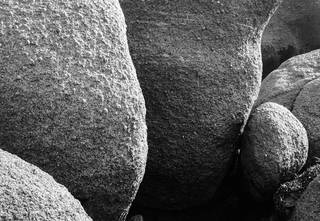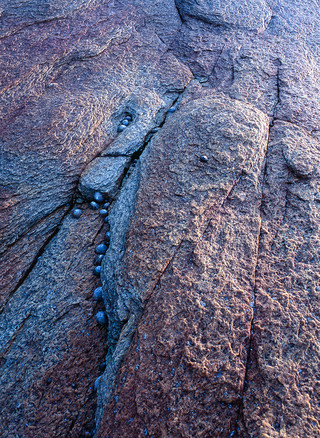Trip report from Brittany

Adam Pierzchala
Now retired, I have more time to enjoy being out with my camera looking for scenes and subjects that pique my interest, especially coastal, woodland and close-ups. Although I still have several rolls of 35mm and MF film in my freezer, I shoot almost exclusively digital now
I first went to Brittany in March 2010 for a short visit specifically to explore the Pink Granite Coast. The endless variety of wonderfully sculpted shapes was simply overwhelming and I was constantly torn between taking shots to show the folks back home, and taking a more measured approach with an artistic intent. I resolved that I had to come again. The opportunity arose in March of this year when I accompanied Nigel Halliwell and Paul Franklin in the guise of their recent venture, Taking Time (www.taking-time.co.uk). The workshop was almost twice as long as my solo visit and took in the southern coast of Brittany with Quiberon and the Côte Sauvage, Penmarc’h and La Pointe de la Torche, as well as my old stamping ground at Trégastel and Ploumanac’h in the north. A varied programme with lots of time to explore, think and talk photography and for culinary delights too: when the light was too harsh we visited crêperies – a good way of nurturing the creative spirit!!
Nigel (whom I already knew from two other tours) and Paul are both highly experienced and accomplished photographers, using digital compacts and smart phones for exploring subjects before turning them into final compositions on large format cameras.
Our two dawns at Quiberon were rather too clear for the rocky shore but we had more workable soft light on the pristine sandy beaches at dusk. On the second day, while waiting for the harsh light in middle of the day to subside, we of course lunched on crêpes and then visited the gallery of Philip Plisson (http://www.plisson.com/) at nearby La Trinité sur Mer: it is often worth seeing local artists’ work to gain inspiration from their vision of the area. It was here that we uncovered photos of the “cimetière de bateaux” (boat graveyards) at Magouër, and decided to stop-off there on our way to Penmarc’h the next day to attempt our own images.
I found a rich variety of detail subjects some of which proved to be really challenging technically and I took some time to decide on my preferred viewpoint, depth of field etc. Careful lens choice and tripod position were paramount. Another surprising find was a dreadfully smelly fish landing station, again with plenty of detail subjects among the ropes and other fishing paraphernalia.
What I found very difficult during those first two sunny days was visiting rocky coastal locations in strong light and visualising how they might appear in the late evening or at dawn. Somehow the structures and shapes just would not fall into place and when we returned to photograph at either end of the day, the earlier scoping hadn’t really helped me. I found that I still had to take time to settle in and find my subject.
A rather rainy Wednesday evening at Penmarc’h gave me the opportunity to play in black-and-white with my Rollei. Thursday dawned with thick mist and dismal light and again I felt that black-and-white would suit the conditions best – though Paul and Nigel both opted for colour. The shoot over, we had breakfast, packed and moved on to the northern Pink Granite Coast at Ploumanac’h. It was a long drive through attractive countryside and we stopped off at another cimetière with a different set of abandoned fishing boats and trawlers, some of which were well over 100 years old. The images we all created here were very different from the first such location, reflecting the different character of the boats, the light and the surroundings.
At Ploumanac’h the totally different coastal structures afforded yet more new subject matter, this time helped by softer dawn and evening light and subtle colours. Daytime light was again rather too contrasty so we whiled the time away watching the world go by while talking photography and watching the local café society enjoying their time off.
Workshops like these help to bring new learning but also refresh what many of us know but sometimes forget to apply. So it was with me and as the week progressed I stopped hurrying: I selected and observed my subjects more carefully and thought far longer before clicking the shutter. I began to take far more time over each composition, something which I did not do sufficiently well two years previously. Paul and Nigel were always on hand to check my viewfinder and make helpful comments. The main lesson I re-learnt was that photography is not a race (unless the light is going to disappear!) and there is no absolute need to take a photo: better to take time over one good composition than rush into several poor ones. Some say that it is best to leave our pictures for some months and come back to them once we’ve forgotten our emotions at the time of taking. Others say that if the photo doesn’t hit the spot straight away, then it has missed the mark. It remains to be seen which of my photographs will become my favourites from this trip, but there is no doubt that I enjoyed taking them all.
Adjusted Layers: The first morning I lined up a shot with some difficulty as it necessitated standing on a small sloping ledge while carefully setting the tripod on steep rock. Nigel had been watching me and on the way back to breakfast grilled me in detail about my composition. As we talked I realised that I had included too much of the background and needed to re-shoot the next morning. The resulting shot, from an even more precarious perch, is shown here.
Rocky End: I like the juxtaposition of soft sand and hard rock with the colour contrast. This was one of just three compositions in the whole week where I used the landscape format.
Blue rinse: the rising sun had just reached this sloping patch of wet rock creating wonderful shapes and colour contrasts
Got knotted: I had to work quickly as the hazy afternoon sun was about to disappear behind a hill. The colours help to add character, almost personality, to the worn old hemp. I like it, yet I still ask myself: a photo taken or an image made?
A-peeling angle. Brittany has several locations with old beached boats; this one is at Magouër. The shot was particularly difficult to set-up, showing the ribs of one boat that was almost buried in the sand, with the other newer boat at a crazy angle in the background.
Stormy weather: On the Wednesday evening it rained. Not hard, but enough to dampen the spirits. With my ageing Rolleicord and 400 ASA B&W film, I found three compositions in the gloomy fading light, one of this particularly enthusiastic wave that had me running for higher ground!
Play Misty: Thursday dawned dark with a brooding mist. Despite the gloom and an over-friendly dog (horrific visions of prominent paw marks all over pristine sand) we each found our own subjects and separated to get to work. I used the Rollei again to set-up a minimalist composition which included some gulls on the wet sand in the middle distance.
Golden hour. These rocks looked good in gentle light at sunrise: I was attracted to the reflected light and colours on the shady side but never saw that the water drops caught the rising sun - an added bonus!
In the shade: with a bright blue sky above, the wet rock was full of contrasting colour and I was fortunate to find these geometric patterns. Delicate footwork (mine and the tripod) was required on the slippery rock to get the composition as I wanted it.
See: weed. I had to use a sunshade here against the strong hazy sun. Velvia emphasised the blue from the sky above and the green fronds have turned a dark cyan. But here again, is this a photo taken? Perhaps because I chose this angle to show the “flow” in the fronds (with Paul’s help) and decided on my own framing, I think this really is an image made.
In the groove. The full-on sunset never materialised as the sun dissolved into a cloud bank, a problem that plagued me two years ago. Nevertheless, what I though was subtle lighting came out very colourful and brought out the pinks and oranges in the granite.
In the pink: The dawn light was just right for this wonderful rock formation right at the edge of the water. Meter the subject, point the camera and shoot: it was an easy one to take. So is this just a snapshot or have I shown why this eroded mass took my fancy?
Boulders: not so easy to compose requiring careful choice of lens, depth of field and viewpoint. I preferred monochrome here as the light was too strong to do justice to the colours.
Shell shocked: I spotted this early after sunrise, but ignored it. Maybe the light was too flat, or I thought I saw something better close by. But when later the light was just glancing off the top I decided to have a go. It was difficult to compose, I was at the limits of depth of field, and almost gave up. But with Nigel’s help this image came about. I was uncertain about it at first, but it’s grown on me over the weeks.

